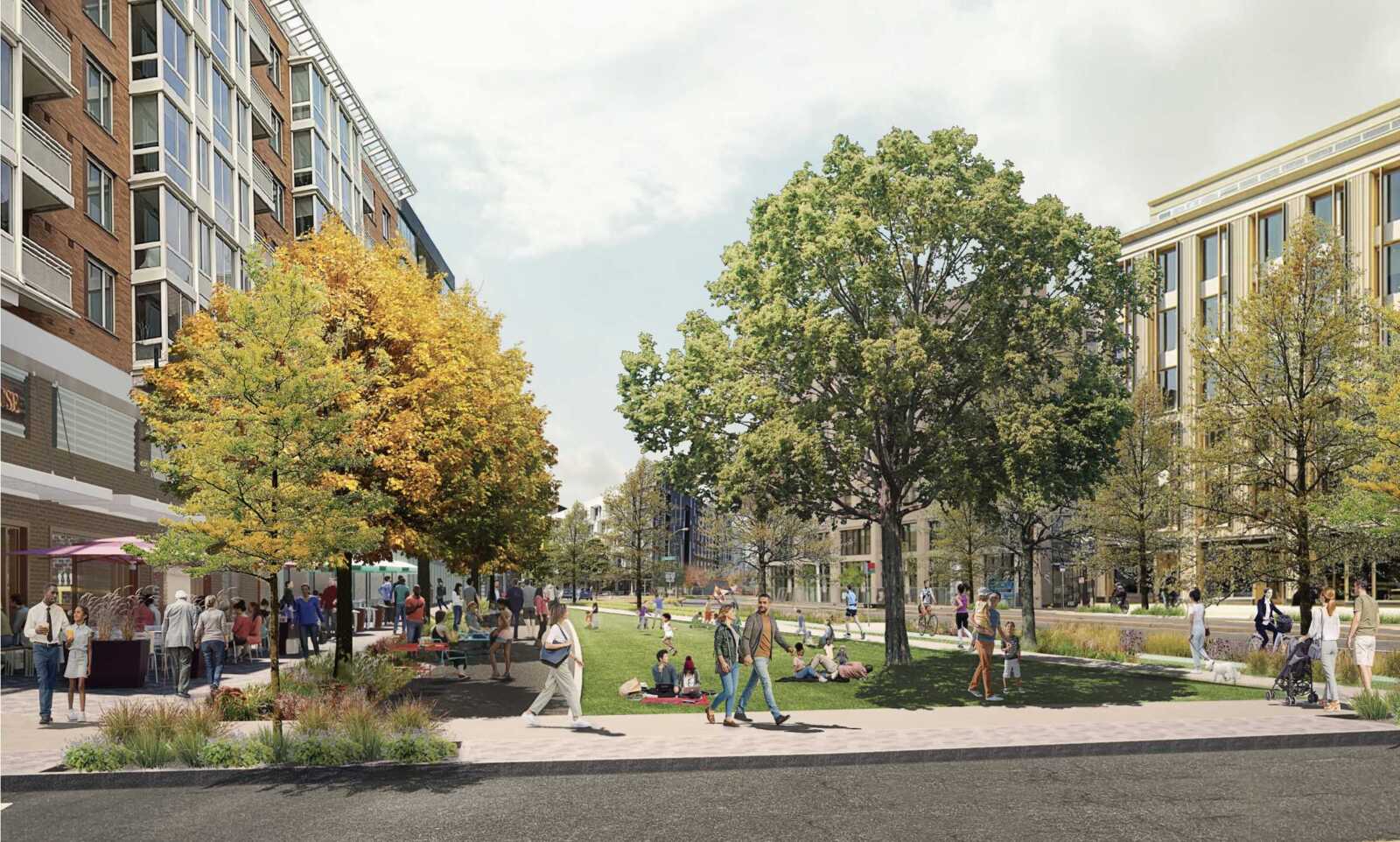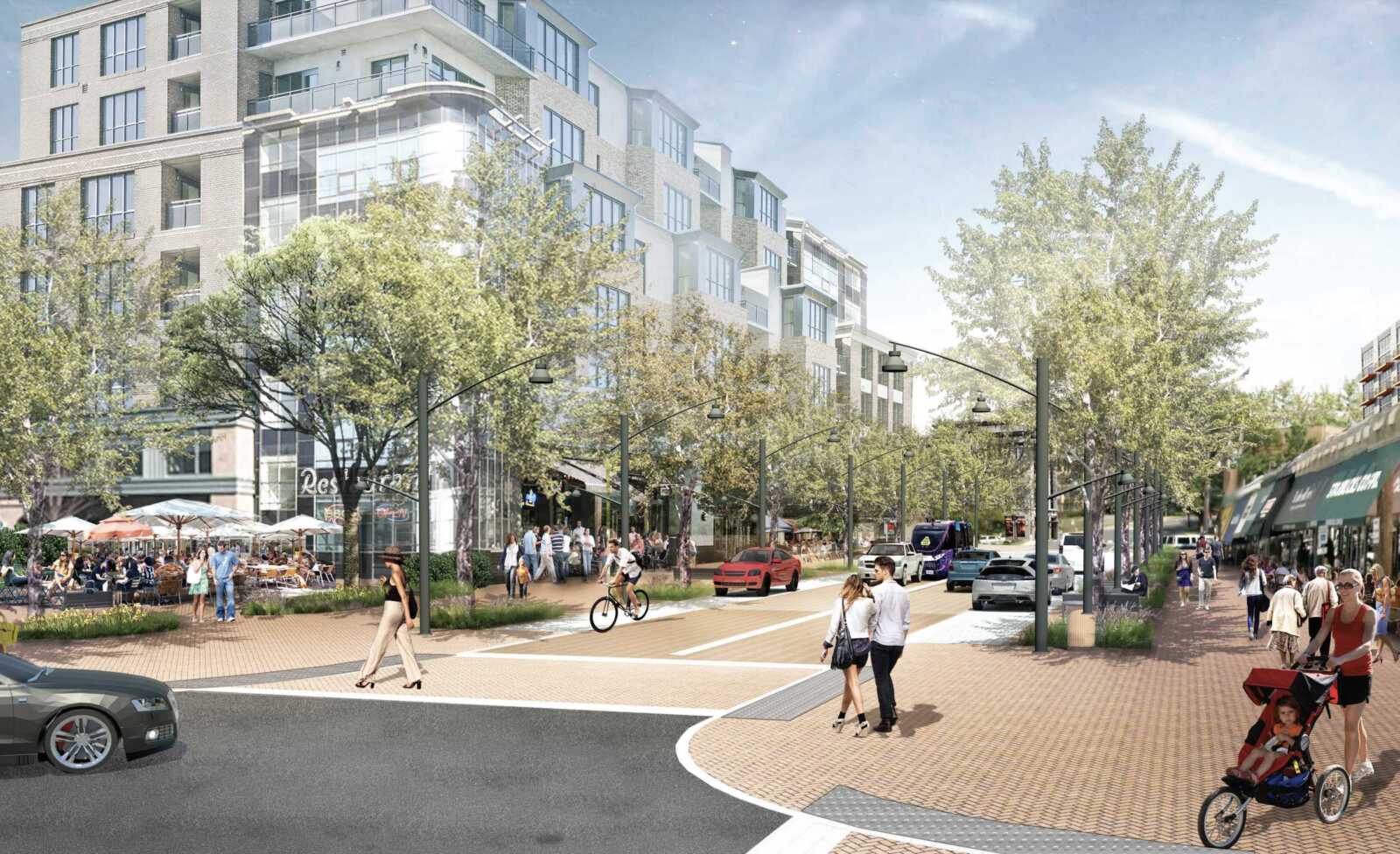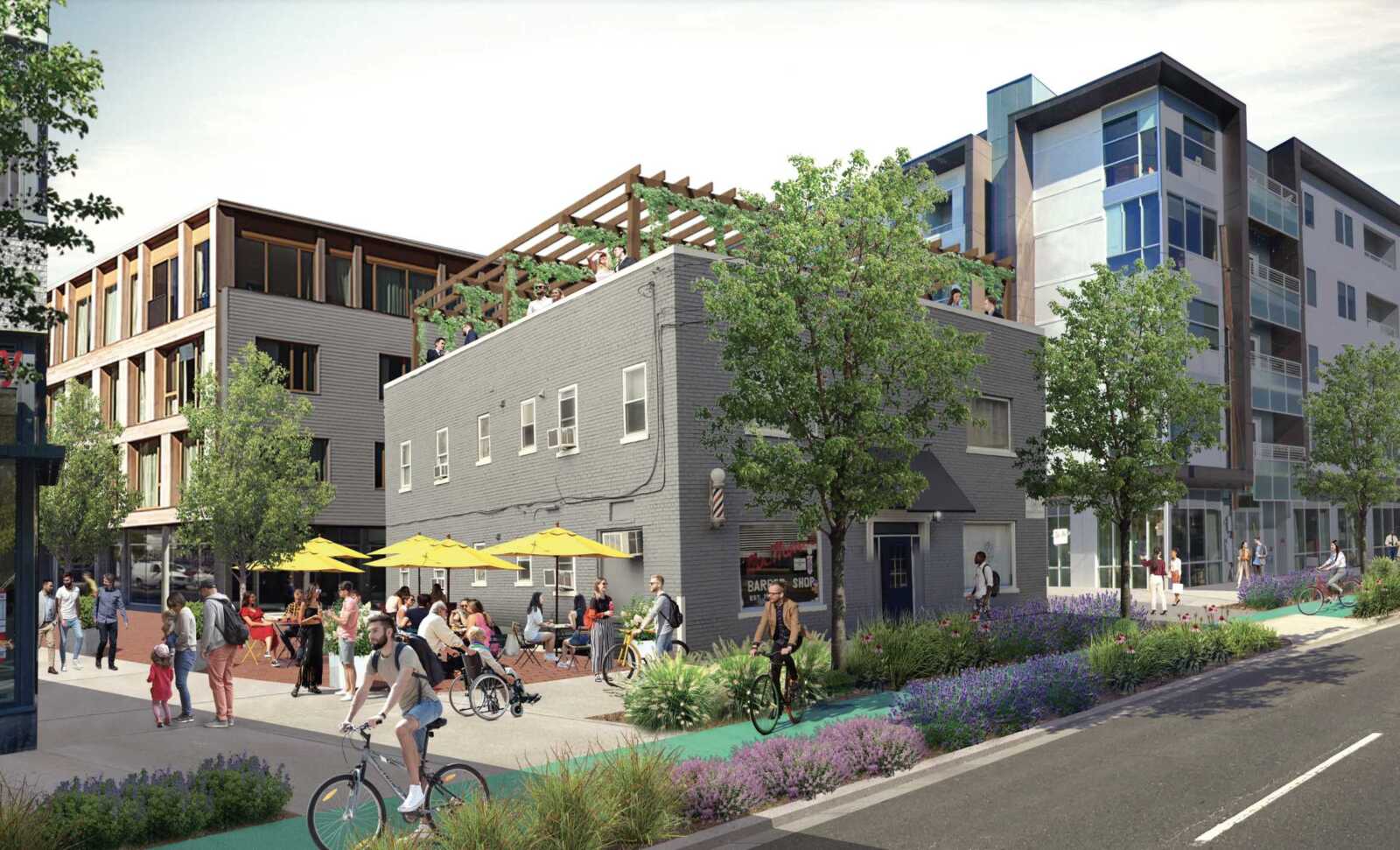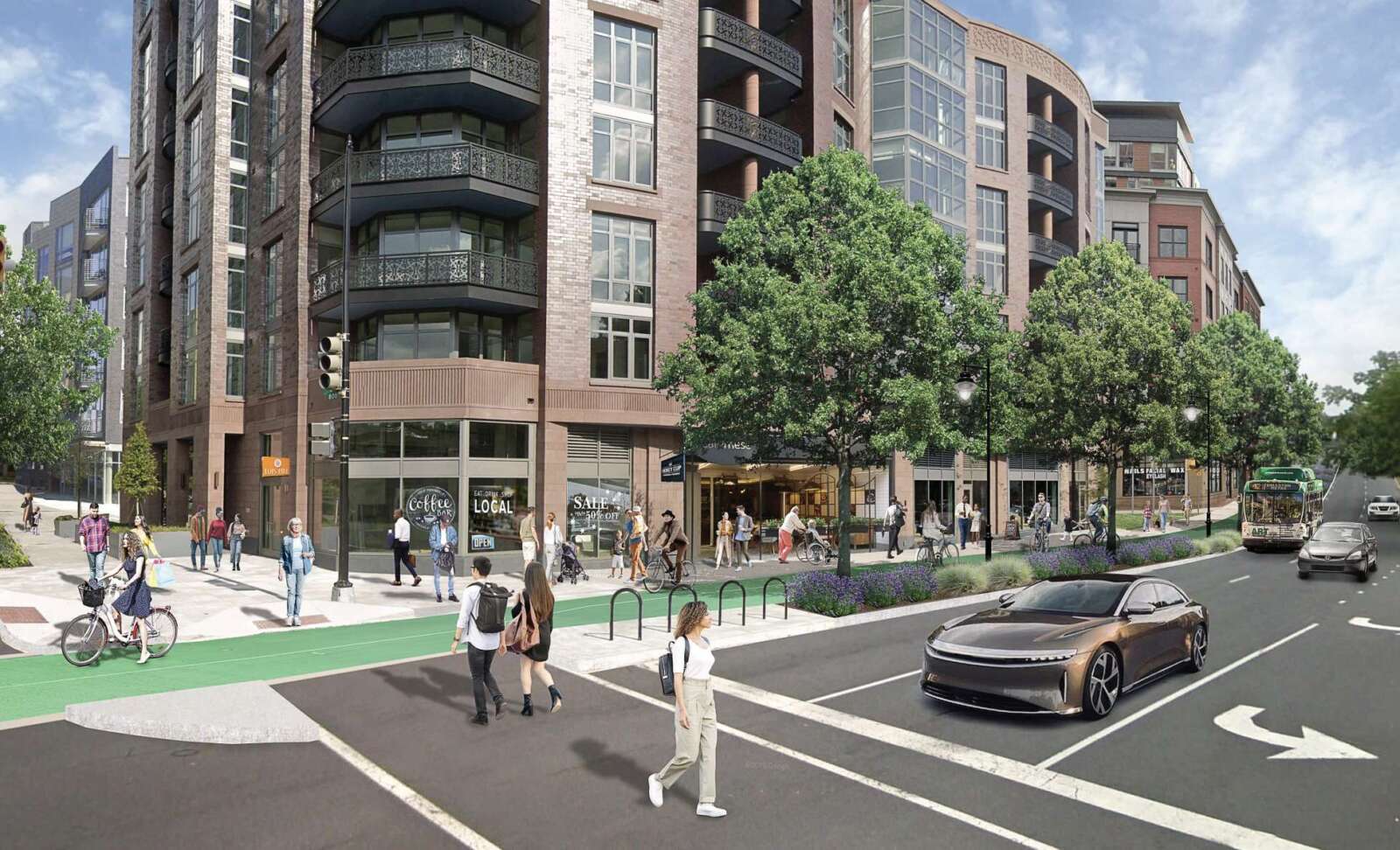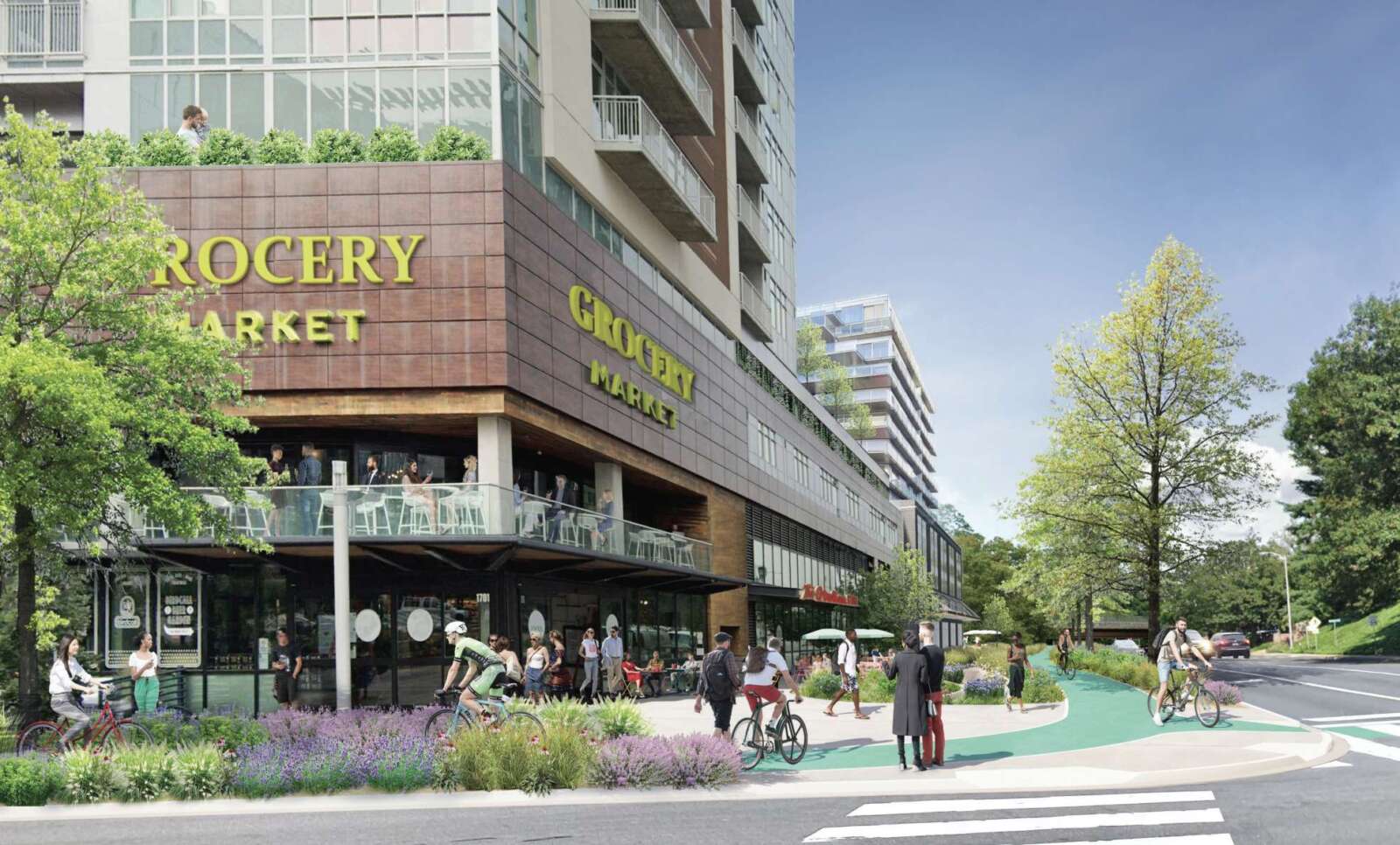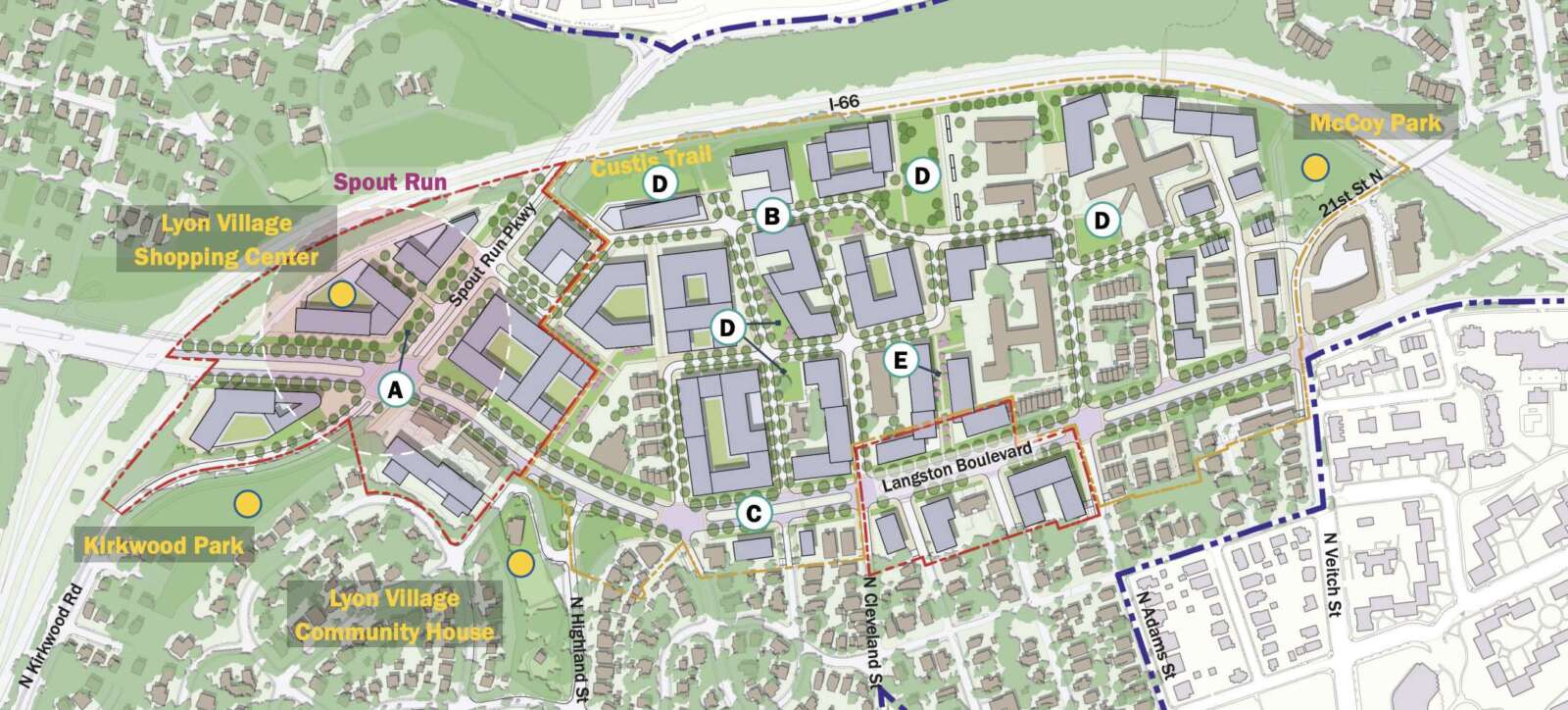Plan Langston Blvd — a sweeping document envisioning a tree-lined, walkable Route 29 with apartments over retail — is gearing up for final discussions and eventual approval.
The newest draft landed last Thursday: two business days before a Planning Commission meeting on whether to advertise hearings on the plan. It contained a slew of changes county staff explain are policy clarifications, responding to recent feedback from citizen commissions, the Arlington County Board and residents.
In a 3-hour meeting Monday, some Planning Commissioners objected to the timing and moved to delay hearings one month, though this failed. They instead unanimously recommended hearings by the commission and the Arlington County Board in November. The deliberations echoed this stage of the Missing Middle hearings, last Thanksgiving, with commissioners noting this step simply sets what can be considered next month.
“I do think that it is an unfortunate timeline,” Planning Commission Vice-Chair Sara Steinberger said. “[This] document would be a struggle for most people to get through in that period of time. And I think that we should aim to do better because I think that’s important for the community to trust the process.”
Steinberger, who made the failed motion to delay hearings on Plan Langston Blvd, or PLB, had backing from Commissioner Nia Bagley.
“[Steinberger] was a little bit more polite than I probably would be,” Bagley said. “I hope we never do this again. I hope we give this more time in the future.”
Commission Chair Devanshi Patel said she understands the concerns of her colleagues but, sometimes, making real-time changes cannot be reconciled with giving ample time for people to review them.
“I think that staff did the best job that they could do by getting a comprehensive plan together with up-to-date information, reconciling the comments that they’ve been hearing from every single meeting of this body and other bodies, and being able to provide it in advance of this meeting as possible,” she said.
Agreeing with Patel, Commissioner Daniel Weir did say he and others have been “harping” on staff to return to the pre-pandemic days when meeting materials were published seven to 10 days before meetings.
But, he continued, “just because this form of the document wasn’t published before a certain day out, I don’t think it follows from that that there hasn’t been a full and robust public process… at least for the purposes of moving forward on the [request to advertise hearings].”
Recalling yet another controversial plan, the Pentagon City Sector Plan, Commissioner Jim Lantelme said changes were made “literally up to the final Board meeting.”
“If we’re not thrilled with something, it’s okay, because the idea is to get everything out there,” he said. “We can cut it back later. We can’t add to it, but we can cut it back later.”
County planner Natasha Alfonso-Ahmed assured commissioners that Monday’s decision still leaves time for them and other residents to review the changes.
That the draft came out on Thursday “doesn’t mean that there isn’t any time to process and to continue to review this draft that’s out before you,” she said. “We have another four weeks or five weeks before this goes to the again to you all for review.”
To facilitate that, Bagley asked for a document outlining the 1,300 refinements “so that somebody can intelligibly look at that and see how it might affect them and their opinions on this.”
That document is forthcoming, according to staff.
Several people spoke — in person and virtually — largely reprising long-standing critiques related to public benefits, affordable housing and building heights. Some said building heights are either too tall, or not tall enough, while others — plan supporters and skeptics alike — said that the plan lacks teeth to add public spaces, stormwater projects and affordable units.
A few had a rosier view of staff efforts and compromises made to date.
“We support the vision of plan Langston Boulevard,” said Jolie Pillsbury, a resident and member of the owners association for the Palisades Park townhome community in Rosslyn. “We are incredibly grateful for what they have done in the revisions that are before you. The reduced maximum height, I believe, will give us a compromise that gives us increased density, which we hope will result in affordable units in our neighborhood, not elsewhere.”
Grace Hjerpe, with the pro-housing group YIMBYs of Northern Virginia, said the plan will not help Arlington meet its goal of adding 2,500 committed affordable units along the corridor by 2040.
“I’m glad to see that we’ll hit those numbers by 2075 but I may be dead by then,” she said. “We need to allow more height. We can focus this height in areas near Metro areas and around activity hubs. We can relook at the East Falls Church area plan and Cherrydale plans to help us reach this goal.”
Lantelme likewise said the county should look to East Falls Church and Cherrydale — both left out of Plan Langston Blvd because they have their own, not fully realized plans — “sooner rather than later.”
“Those are two primary areas that will be necessary in order to meet the goals of the Affordable Housing Master Plan for this entire corridor,” said Lantelme, who is also president of the Langston Blvd Alliance Board of Directors. (He stated, for the record, that he confirmed with the County Attorney this was not considered to be a conflict of interest.)
As the plan is written now, developers will turn to the historically Black neighborhood of Halls Hill, or High View Park, to deliver the tall projects with affordable housing units, predicted Wilma Jones, the president of the neighborhood’s civic association, the John M. Langston Citizens Association.
“Our neighborhood is one of those neighborhoods that is much more diverse and it’s not as wealthy as many areas in Langston Blvd,” she said. “We have well over 10% [of homes] that are affordable housing units already. We feel like the rest of the Langston Blvd neighborhood should catch up to us before we are given even more to get on.”
She said Plan Langston Blvd, Missing Middle and the Affordable Housing Master Plan need to be in better coordination and staff should show “more concern for some of the people who live close by.”
Commissioners also discussed whether and how the county can add units affordable to people making 30% or less of the area median income (AMI), given the “good number and in fact, maybe even a surplus” of units affordable to people making 60% AMI in Arlington.
“I think it’s one thing that we say affordability but it’s another thing to really talk about who we are aiming to help,” she said.
Arlington County targets 60% AMI — or $90,420 for a family of four — for all of affordable housing projects, says Housing Arlington Coordinator Richard Tucker.
He added that the county “strive[s] to achieve affordability at 30% of AMI,” though this takes “substantially more money” and results in “fewer units as opposed to more units at 60%.”
To get to 30%, the county can provide housing grants and vouchers, he said.
“Is it better to subsidize units down to 30% or to provide the rent subsidy to the to the tenants?” he asked. “There’s two ways to do it and I’m not sure which way is better, but there’s more than one way to do it.”
Anne Bodine, of Arlingtonians for Our Sustainable Future, which advocates for slower growth, said the plan should limit any growth to by-right development for 4- to 5- story buildings and put the onus on Arlington to deliver public facilities, schools, parks and stormwater projects.
The current plan, she said, will get 7- to 10-story buildings in exchange for some committed affordable units and public benefits but it is not enough to justify the predicted loss of market-rate affordable units and their inhabitants.
“PLB must teach us that the private sector is not the proper steward of the public realm. The county government is remiss in claiming it cannot pay for infrastructure except through up-zoning and higher land use,” Bodine said. “ASF shares your vision for green, diverse, financially responsible planning, but also wants balance with public spaces and infrastructure that remain in the public domain.”


